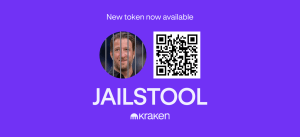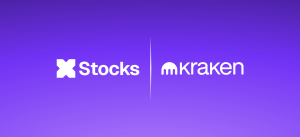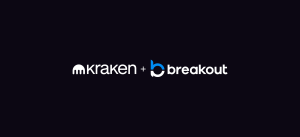Optimistic vs. ZK Rollups: Which Layer 2 Is Right for You?
The Ethereum ecosystem is moving to Layer 2. Why? Because apps need faster and cheaper transactions—and rollups can deliver. But not all rollups are created equal. Two dominate the space: ZK rollups and optimistic rollups. They both improve transaction throughput and lower costs, but take opposite approaches to security and execution. Here’s what sets them apart—and how to pick the right tech for your protocol, product, or portfolio.
What Are Rollups?
Rollups are a Layer 2 scaling solution that helps Ethereum handle more users without slowing down. They process activity on an additional layer, then post results to the base chain. This boosts blockchain scalability while preserving security. Instead of recording every step, rollups send a compressed version of events. That means fewer gas-heavy writes and faster throughput.
All modern blockchain rollups rely on one basic idea: doing more off-chain, and keeping Ethereum safe for final settlement.

Learn more about rollups here.
What are Zero-Knowledge (ZK) Rollups and How Do They Work?
ZK rollups prove that transactions are valid without revealing everything. They generate ZK proofs—short mathematical statements—to show activity is legitimate. These proofs are posted to Ethereum along with the new state. Every single transaction gets confirmed as part of a batch. This cryptographic system is known as zero-knowledge. It’s efficient, private, and fast.
In simple terms, ZK rollups bundle transactions, create a compressed proof, and send it to Ethereum. The chain trusts it because the math checks out.
Learn more about ZK rollups in our dedicated article.
What are Optimistic Rollups and How Do They Work?
Optimistic rollups assume transactions are valid unless someone proves otherwise. They don’t create proofs up front. Instead, they post transaction data and leave a window for challenges. If someone finds a problem, they can submit fraud proofs. This is called a fraud proof mechanism, and it’s what secures the system. Rollups like Optimism and Arbitrum use this optimistic approach to run faster and cheaper. They handle off-chain transactions, then post the results to Ethereum after the challenge period ends.
Continue reading about optimistic rollups here.

Comparative Analysis: Optimistic vs. ZK Rollups
Security Model
Security is the foundation of all rollup solutions. Both types inherit security from Ethereum, but enforce it differently. ZK rollups rely on cryptographic proofs to guarantee that every state change is correct. That means fraudulent transactions can’t sneak through—they’re mathematically impossible.
Optimistic rollups, on the other hand, use the optimistic approach. They assume transactions are valid unless someone can prove otherwise. While this keeps things fast, it opens a small window where invalid transactions could exist, unless challenged.
ZK rollups are stricter from the start. But optimistic rollups are easier to launch and still benefit from Ethereum’s security guarantees.
Proof Type
ZK rollups use zero-knowledge proofs to verify transaction validity before anything touches the mainnet. These validity proofs confirm that the data is accurate without revealing transaction details.
In contrast, optimistic rollups rely on fraud proofs. After data is posted, the system waits to see if someone will submit fraud proofs during the challenge period. If no one objects, it’s final. This delayed check saves time and resources but adds risk if watchers don’t act in time.
Latency and Finality
ZK rollups offer instant finality. Once the proof is verified, you’re done—no waiting. That’s ideal for users who need quick access to their funds or rely on fast responses, like in gaming or real-time trading.
This is unlike optimistic rollups, which have a dispute period (usually 7 days). Therefore, withdrawals and some cross-chain actions are delayed. This time allows users to detect problems—but also slows down transaction finality.
EVM Compatibility
ZK rollups are catching up, but they’re still harder to build for. Projects like Scroll, zkSync, and Polygon zkEVM are working on establishing full compatibility, but not all rollups support the same tooling yet. Developers must often rewrite apps or use custom compilers.
Optimistic and ZK rollups differ here, because optimistic rollups like Optimism and Arbitrum are already highly compatible with the Ethereum Virtual Machine (EVM). That means you can deploy existing smart contracts with little or no change.
Read more: What are smart contracts?
Cost Efficiency
Both options lower transaction costs by processing logic off-chain. However, ZK rollups are more efficient in terms of data compression. ZK rollups bundle transactions and only post final state updates to Ethereum. This results in lower fees per user.
Optimistic rollups post more transaction data, which makes them slightly more expensive. But they also avoid the overhead of generating complex proofs, which can be costly for developers.
Scalability Metrics
Rollups improve blockchain scalability, but in different ways. ZK rollups excel in increasing transaction throughput thanks to fast processing and compact proofs.
Optimistic rollups work also well under heavy loads, but their design is more sensitive to fraud-proof disputes and data availability constraints. Still, both systems handle far more than Ethereum Layer 1 alone.
Decentralization
Decentralization depends on who controls the sequencer and how fraud or proof systems are handled. Most rollups today—including both types of blockchain rollups—rely on a centralized sequencer.
However, decentralizing this component is a work in progress. The Ethereum roadmap for rollups includes permissionless participation and community-run provers. This matters, because true decentralization ensures censorship resistance and long-term network health.
Flexibility
ZK rollups are a more complex technology. They’re harder to build, but they open up more privacy options and can support executing off-chain transactions with enhanced confidentiality. This is important for identity apps, supply chains, and private DeFi.
Optimistic rollups are more flexible in deployment and faster to launch. They support general-purpose logic and plug easily into the existing Ethereum stack.
Ecosystem Maturity
Optimism and Arbitrum launched earlier and have mature ecosystems. Dozens of DeFi protocols, NFT platforms, and bridges run on these networks. Their tooling is stable and well-documented.
ZK rollups like zkSync, Polygon zkEVM, and Scroll are newer. But they’re growing fast. Each has raised significant funding and is expanding its ecosystem week by week. Still, ZK rollup vs optimistic rollup ecosystems aren’t at the same scale yet—but the gap is narrowing.
Support
Both rollup types have strong backers. Zero-knowledge rollups like zkSync are supported by Matter Labs, while Scroll works closely with the Ethereum Foundation. Polygon’s zkEVM also enjoys strong brand presence and community dev tools.
Rollups and optimistic systems like Optimism and Arbitrum benefit from broad adoption, VC funding, and integrations with major dApps like Uniswap and Aave.
Whether you’re building or just using dApps, the level of support and documentation can influence your choice—especially if you’re looking for help deploying a smart contract or scaling a user base.
ZK Rollups vs. Optimistic Comparison Table
Use Cases and Ecosystem Integration
Developers pick rollups based on performance, compatibility, and tool maturity—not just fees.
Optimistic rollups dominate DeFi. Arbitrum powers GMX, Radiant, and Uniswap. Optimism supports Aave, Synthetix, and Worldcoin.
Meanwhile, ZK rollups lead in privacy and payments. zkSync and Starknet support Argent wallet, Loopring, and ZK-based identity protocols. GameFi and NFTs are also growing across both types, especially on Base and Polygon zkEVM.
Adoption Trends
Rollups are quickly becoming the default for dApps, wallets, and cross-chain protocols across Ethereum’s roadmap.
Optimistic rollups launched first and scaled fast. As of 2025, Arbitrum and Optimism hold most of the Layer 2 market share. But ZK rollups are closing in. Scroll, zkSync Era, and Polygon zkEVM now attract growing TVL and active users. Meanwhile, Coinbase’s Base is onboarding millions.
According to Ethereum creator Vitalik Buterin, ZK rollups are likely to outperform once their underlying technology catches up.

Which Rollup Is Better?
Neither wins by default. ZK rollups excel in speed, privacy, and finality—they’re ideal for payments, identity, and low-latency dApps. Optimistic rollups offer faster deployment, better EVM compatibility, and more integrations today. Choose based on your use case: ZK for performance-critical apps, optimistic for fast onboarding and broader reach. Both will likely coexist in Ethereum’s modular future.
Final Thoughts
Whether you choose Optimistic or ZK rollups depends on what you’re building. One offers maturity and ease of use. The other brings speed, privacy, and precision. Ethereum’s future relies on both. For developers and users alike, rollups unlock performance without sacrificing decentralization.
FAQ
H3 Which rollup is better for DeFi applications: Optimistic or ZK?
Optimistic rollups lead in DeFi today. Arbitrum and Optimism support top protocols like Uniswap, Aave, and Synthetix. They offer EVM compatibility and fast onboarding. ZK rollups are catching up thanks to apps like dYdX, zkSync-based DEXs, and native lending platforms. For complex apps with immediate needs, optimistic is easier. For future-proofing, ZK has the edge.
How do gas fees compare between Optimistic and ZK rollups?
ZK rollups often offer lower fees. They use compressed validity proofs and only post final state changes. Optimistic rollups post full transaction data, making them slightly more expensive per user. That said, both reduce gas costs dramatically compared to Ethereum Layer 1. Actual fees depend on usage, congestion, and the rollup’s data model.
Can I move assets or smart contracts from one rollup to another easily?
Yes, but it’s still a work in progress. Bridges like Hop, Across, and Orbiter support asset transfers between rollups. However, moving smart contracts isn’t seamless. You often need to redeploy on the target network. Tooling is improving, but cross-rollup compatibility is not yet plug-and-play. Expect smoother workflows as rollup standards mature.
What are the key tradeoffs between optimistic rollups and ZK rollups?
ZK rollups offer instant finality, better privacy, and lower long-term costs. But they’re complex and harder to build on. Optimistic rollups are easier to use and more supported, but withdrawals take longer and depend on watchers. The core tradeoff is between speed of development and speed of execution.
Disclaimer: Please note that the contents of this article are not financial or investing advice. The information provided in this article is the author’s opinion only and should not be considered as offering trading or investing recommendations. We do not make any warranties about the completeness, reliability and accuracy of this information. The cryptocurrency market suffers from high volatility and occasional arbitrary movements. Any investor, trader, or regular crypto users should research multiple viewpoints and be familiar with all local regulations before committing to an investment.
The post Optimistic vs. ZK Rollups: Which Layer 2 Is Right for You? appeared first on Cryptocurrency News & Trading Tips – Crypto Blog by Changelly.
Cryptocurrency News & Trading Tips – Crypto Blog by Changelly


















